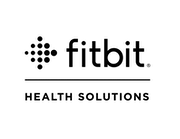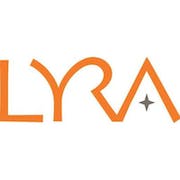Looking for the best corporate wellness software? Our buyer's guide is here to help! Make the right choice for your business. Improve employee health and happiness today!
As businesses continue to compete in an ever-evolving landscape, employers are increasingly seeking innovative ways to attract and retain talent while improving employee productivity, well-being, and engagement. At the forefront of these efforts is corporate wellness software, a powerful tool that can help organizations promote a culture of health and wellness, reduce healthcare costs, and improve overall business performance.
McKinsey shows that the wide application of corporate wellness solutions can save the global economy up to $1 trillion per year in lost productivity due to mental health conditions. With a wide range options available, choosing the right wellness software can be a daunting task. This buyer's guide will provide decision-makers with the information they need to select a solution that fits their organization's needs, goals, and budget. From analyzing key features to evaluating customer support, we'll walk you through the critical factors to consider when selecting the right one.
What is corporate wellness software?
Employees often tend to neglect their health and well-being due to long working hours and demanding targets. This has led to an increase in cases of stress, burnout, and lifestyle-related diseases. Corporate wellness software is an excellent tool that companies can use to support their employees' health and well-being. It offers a range of features and services to help companies improve employee health and wellness. These tools assist in identifying health risks and provide recommendations to address them. It also provides employees with the tools and resources needed to maintain a healthy lifestyle, such as exercise plans, nutritional advice, and stress management techniques.
Common use cases include:
-
Identifying health risks: It helps businesses identify health risks by analyzing employee data, such as demographic information, health history, and lifestyle habits.
-
Employee wellness programs: This solution can assist in creating employee wellness programs such as exercise plans, nutritional coaching, smoking cessation, and stress management.
-
Health coaching: A corporate wellness program can provide personalized coaching and counseling services to employees. This can include phone consultations, online coaching, and in-person sessions.
- Health risk assessments: It can offer health risk assessments to employees, which can help identify potential health issues and risk factors.
Companies that can benefit from a wellness tool include those with a large number of employees, those with a high-stress work environment, and those with a desire to improve employee health and well-being. Ultimately, by investing in their employees' health and wellness, companies can improve employee engagement, reduce healthcare costs, and increase overall productivity.
What are the benefits of purchasing a corporate wellness system?
This system has become increasingly important as companies realize the value of investing in the health and wellbeing of their employees. By implementing wellness programs and utilizing it to track progress and provide resources, businesses are able to improve employee morale, reduce absenteeism, and increase productivity, among other benefits. Here are some of its key benefits:
Promotes a healthier lifestyle
With access to tools and resources such as fitness challenges, health trackers, and nutrition guides, employees are better equipped to adopt healthy habits and make positive changes to their lifestyle. This can result in lower rates of chronic illnesses, which can have a significant impact on healthcare costs for both employees and the company.
Increases productivity
By providing employees with wellness resources, they are more likely to take care of their physical and mental health, which can lead to increased focus and productivity at work. Additionally, wellness programs have been shown to reduce stress levels, which can improve mood and overall job satisfaction. According to Deloitte’s Global Human Capital Trends report, “61% of business leaders said that an increased focus on well-being improves employee productivity and bottom-line business results.”
Reduces absenteeism
When employees are feeling their best, they are less likely to take sick days or need time off for doctor's appointments. The solution can provide resources such as telemedicine options and mental health support, which can reduce the need for employees to take time off work.
Attracts and retains talent
Offering wellness programs and resources can be a major selling point for potential employees, particularly those who prioritize work-life balance and a healthy lifestyle. Additionally, employees who feel valued and supported are more likely to stay with the company long-term.
Improves company culture
Wellness platforms can bring employees together and foster a sense of community and support. By prioritizing the health and wellbeing of employees, companies can create a positive and inclusive company culture.
10 key features of corporate wellness software
Here are 10 of the most common features found in a corporate wellness application :
-
Health risk assessments (HRAs) – An HRA is typically the first step in any corporate wellness program. It is a questionnaire that helps identify potential health risks among employees.
-
Biometric screening integration – Biometric screening is a process of measuring a person’s physical characteristics, such as blood pressure, cholesterol, and glucose levels. Many wellness programs now offer integration with these devices to help track progress and provide more accurate reporting.
-
Personalized wellness plans – "One size fits all" does not apply to wellness plans. The best solution provides personalized plans based on each employee’s health profile and goals.
-
Goal tracking and reporting – A key aspect of any wellness program is tracking progress towards set goals, whether those goals are weight loss, healthy eating, or reducing stress. The software should provide clear and concise reporting to both employees and management.
-
Incentive programs – These can be used to motivate staff to participate in wellness campaigns, offering tangible rewards for good results. People love incentives and will go to great lengths to win them.
-
Health coaching – Coaching can be delivered online via chats, or through phone consultations with experts. This valuable feature helps employees develop healthier habits and stay accountable.
-
Social/community support – Peer support is more effective than trying to do things alone. Many wellness plans offer social support features to create a sense of community and motivate participants.
-
Wellness challenges – Using gamification principles, wellness challenges can turn healthy habits into a fun competition. These challenges can involve steps challenges, hydration, or healthy eating among others.
-
Reporting and analytics – Corporate wellness technology should provide detailed analytics and reports to give HR managers of the company a holistic overview of how the program is performing, which campaigns are well-accepted, and where there’s room for improvement.
-
Mobile-friendly – Mobile accessibility is critical. Ensure that the app you select should be easy to access and use, either on mobile phones or tablets, to make it more accessible to busy employees.
Things to consider when adopting a corporate wellness solution
As such, it is important to consider several factors when selecting the right solution for your business. Here are a few you should weigh:
First and foremost, consider the needs of your employees. Different businesses have different wellness needs, so it's important to choose a system that suits your unique requirements. For example, if your employees are largely sedentary, then you might want to opt for one that helps them get more active. On the other hand, if your team travels frequently, then you might want to choose one that offers mobile support.
Next, consider the features of the solution. Look for a system that offers features that are relevant to your employees' wellness goals. This could include anything from exercise tracking to nutrition tracking or even mental health support. Furthermore, consider the software's usability and the availability of support. Your employees should be able to easily use the platform without requiring extensive training, and there should be reliable support should they encounter any issues.
The software's integration with your current systems is also important. You want to choose one that seamlessly integrates with the tools you already use. This minimizes the disruption to your business while also ensuring the solution is easily accessible and available to all employees who need it.
Another vital factor to consider is data security and privacy. Your employees' personal and health-related data is highly sensitive and needs to be kept confidential. Choose an app that takes data confidentiality seriously and provides adequate security measures to protect sensitive data. It should have user-access controls and data encryptions protocols.
It is also important to consider the cost of the software and any associated implementation fees. While investing in this wellness tool is an essential business expense, it's still important to find a solution that fits within your budget. You should compare different options and consider the long-term ROI of each option.
By taking these factors into account, you'll be able to select the right application that meets the unique wellness goals of your business and helps your employees stay happy and healthy.
Market trends for corporate wellness software
Corporate wellness programs have become an essential focus for businesses looking to enhance employee engagement and satisfaction, improve productivity, and decrease healthcare costs. This system is an integral component of these programs, providing businesses with useful insights that enable them to create more effective and personalized wellness plans for their employees. In this section, we will discuss the most significant trends that businesses should be aware of in 2024 and beyond.
-
Artificial intelligence-driven platforms
The integration of artificial intelligence (AI) in corporate wellness software is one of the most important trends to watch out for this year. AI has the potential to transform wellness programs by enabling them to provide personalized recommendations, automate mundane tasks, and analyze large amounts of data. -
Gamification
Gamification is a trend that has been growing in popularity in recent years. A corporate wellness tool with gamification features can make wellness programs more engaging by using game mechanics such as points, leaderboards, and rewards to motivate employees to participate actively. -
Mobile accessibility
Mobile accessibility is another trend that is expected to continue to grow this year and beyond. With more people than ever relying on their smartphones as their primary device for accessing information, corporate wellness programs need to provide a mobile-friendly experience to ensure maximum participation and engagement. -
Holistic approach
Corporate wellness software that takes a holistic approach to wellness is also becoming increasingly popular. This involves utilizing data from various sources, such as wearable devices and health portals, to provide a more well-rounded view of employees' health and wellness needs. -
Data privacy
Data privacy concerns have become a critical issue in recent years, and businesses are increasingly taking steps to protect their employees' sensitive data. Corporate wellness software that takes data privacy seriously is becoming a more attractive option for businesses looking to implement wellness programs.
Conclusion
In conclusion, corporate wellness software offers a comprehensive solution for promoting employee well-being, engagement, and productivity within organizations. By providing personalized health resources, fostering a supportive work environment, and streamlining wellness initiatives, this technology not only enhances the physical and mental health of employees but also contributes to a more vibrant and resilient corporate culture. With its ability to track progress, analyze data, and adapt to evolving needs, it also stands as a pivotal tool in the pursuit of organizational success and employee satisfaction. Embracing such innovative solutions underscores a commitment to employee wellness and positions companies for sustained growth and competitive advantage.







